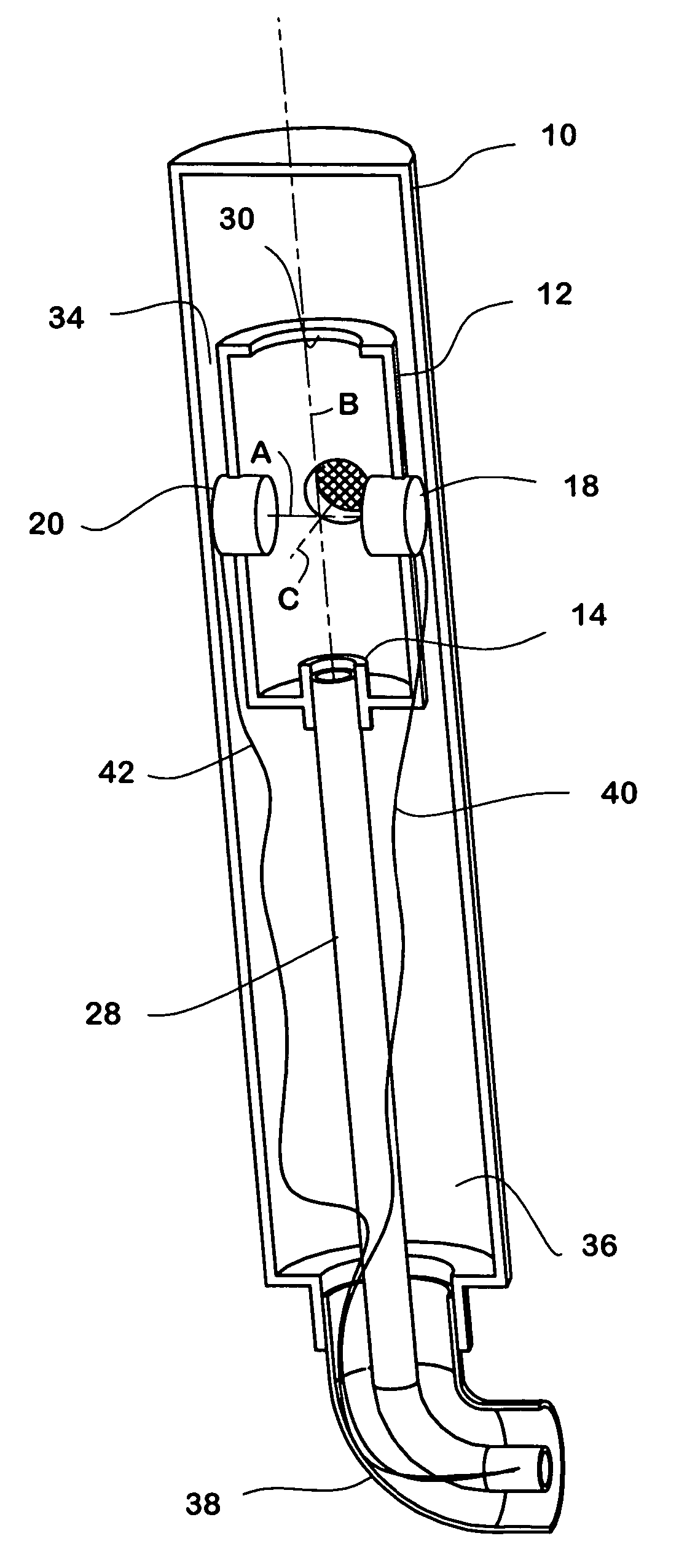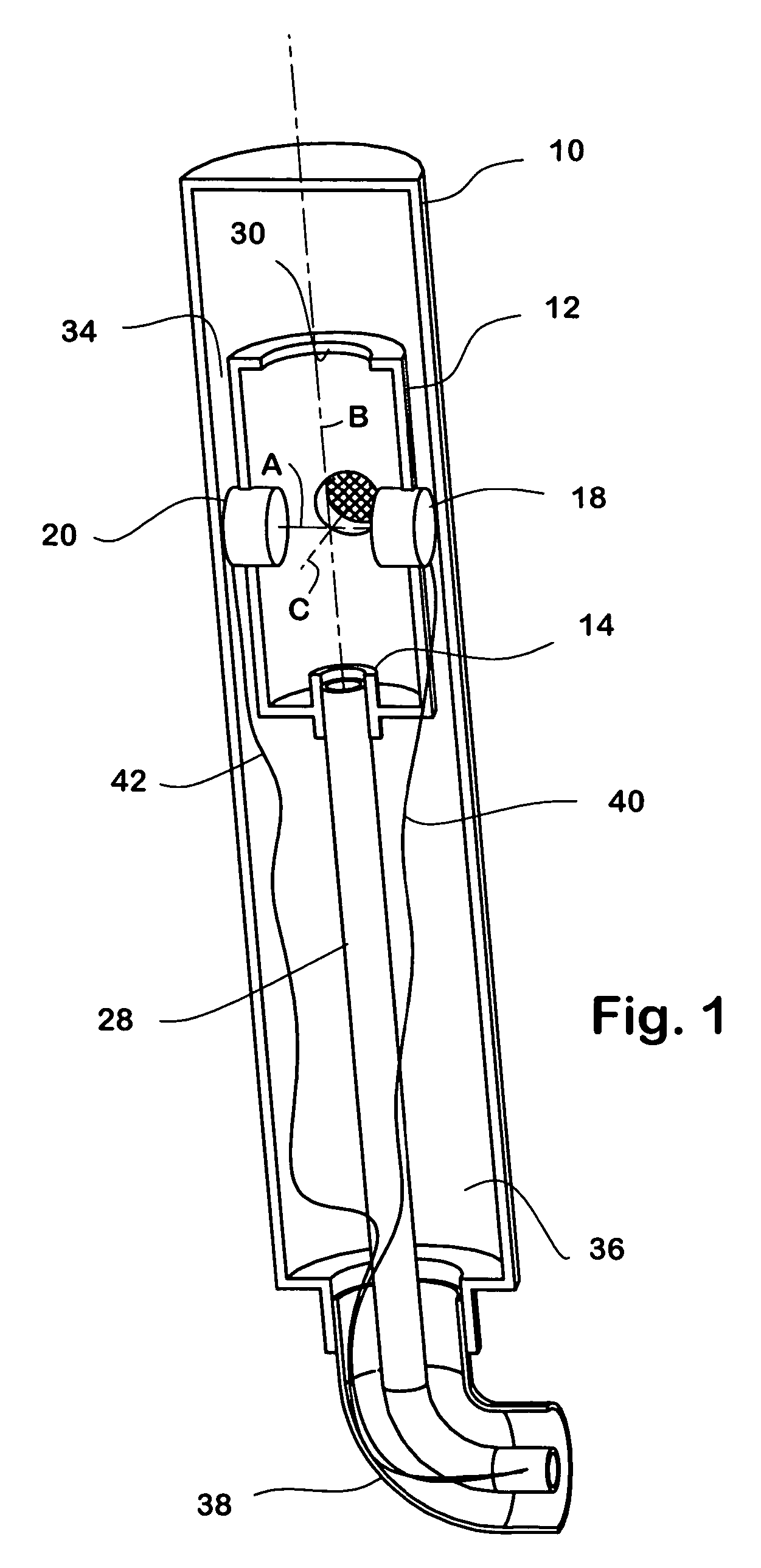Particulate flow detection microphone
a technology of particle flow and microphone, applied in the direction of electrical transducers, transducer types, piezoelectric/electrostrictive transducers, etc., can solve the problems of non-linear response, diaphragm or plate takes a finite amount of time to respond to changes in sound wave pressure, and the mass is fini
- Summary
- Abstract
- Description
- Claims
- Application Information
AI Technical Summary
Problems solved by technology
Method used
Image
Examples
Embodiment Construction
)
[0025]As shown in FIGS. 1 and 2, a particulate flow detection microphone includes a housing 10 containing a detection chamber 12, a particle-bearing gas nozzle 14, and a laser / photo-sensor pair 18,20. The interior surface of the detection chamber may be coated or covered with a sound-absorbing material to minimize confusing sound reflection within the chamber.
[0026]The source and detector are aligned on an axis “A” transverse to the common longitudinal axis “B” of the microphone and of the inner cylindrical detection chamber 12. The source and detector extend through the wall of the detection chamber. To admit sound to the detection chamber, the housing and the detection chamber have apertures 24,26 at locations 90° from the light source and detector; the openings are aligned on an axis “B” perpendicular to axis “A”. Both of these axes are perpendicular to the longitudinal axis “C” of the housing; thus, the axes A, B and C are orthogonal.
[0027]A small duct extends between the walls...
PUM
 Login to View More
Login to View More Abstract
Description
Claims
Application Information
 Login to View More
Login to View More - R&D
- Intellectual Property
- Life Sciences
- Materials
- Tech Scout
- Unparalleled Data Quality
- Higher Quality Content
- 60% Fewer Hallucinations
Browse by: Latest US Patents, China's latest patents, Technical Efficacy Thesaurus, Application Domain, Technology Topic, Popular Technical Reports.
© 2025 PatSnap. All rights reserved.Legal|Privacy policy|Modern Slavery Act Transparency Statement|Sitemap|About US| Contact US: help@patsnap.com



